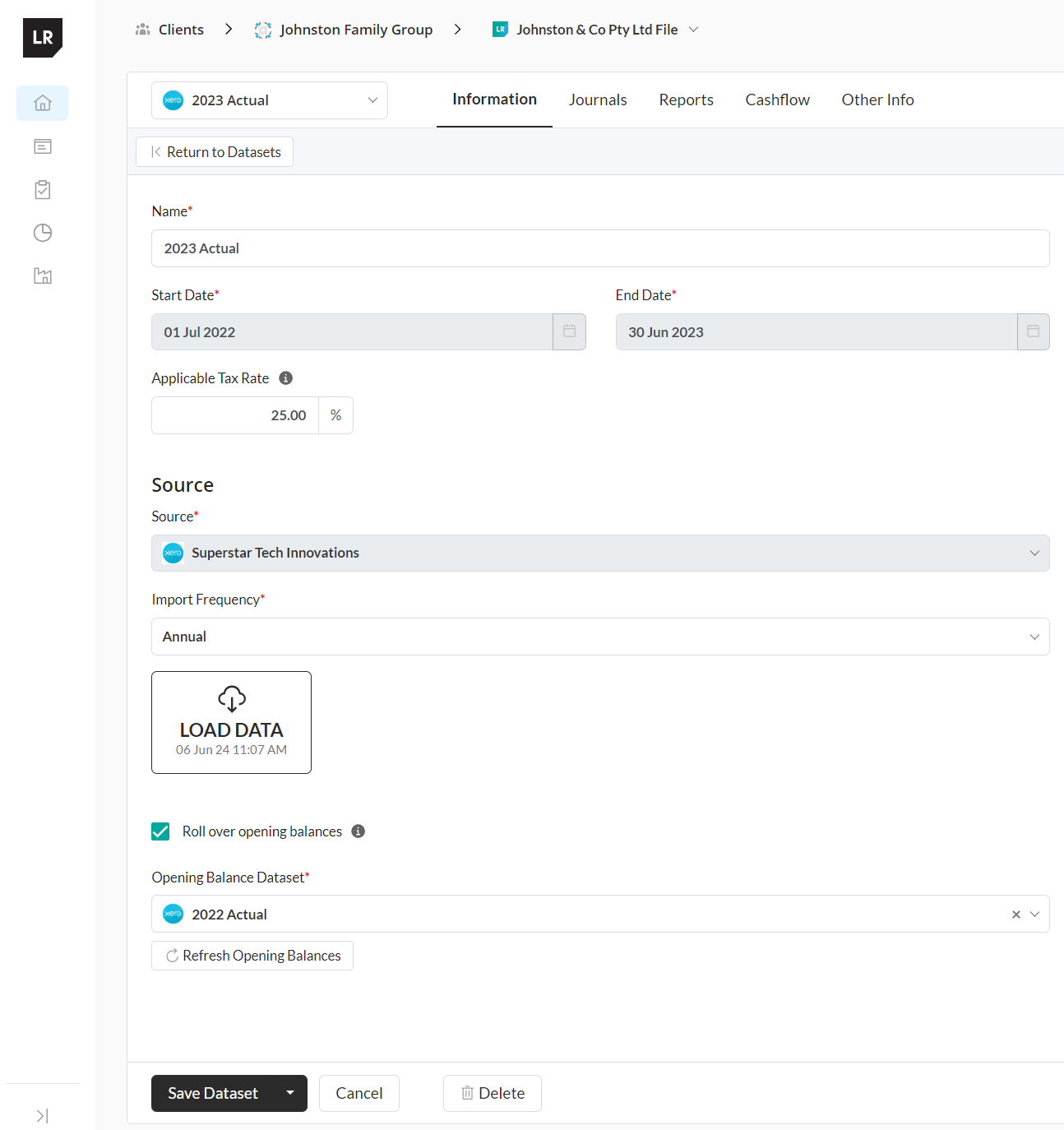Article Objective: To assist users in navigating the Active Platform to understand the concepts of datasets within Active Ledger & Reporting. Context: The accounting industry is able to work with a myriad of different accounting systems because of the common system of double-entry bookkeeping. Active Ledger leverages this concept and uses the trial balance as the common language with which to communicate between all different systems. Please refer to the Glossary for definitions of key terms used in this article. TABLE OF CONTENTS |
An overview
A dataset in Active Ledger is simply a trial balance from a particular accounting file or source for a particular date range. For this reason, when setting up a dataset, we need to know two things:
1) The date range of the trial balance
2) The source of data for the trial balance
Active Ledger will also ask you to name this trial balance, so you can easily reference this in other areas such as Ledger & Reporting or Workpapers. We suggest using a naming convention that gives you enough information to uniquely identify the trial balance within a given entity. For example, in an entity where you have one accounting file and say a budget, you might name the trial balances something like:
2023 Actual
2024 Budget
Another entity might run multiple business divisions or stores through different accounting files, so you might use the following descriptions:
2023 Actual - Melbourne Store
2023 Actual - Sydney Store
2023 Actual - Consolidated (for the consolidation of the two stores)
2024 Budget - Melbourne Store
Creating a new dataset
To create a new dataset, navigate to the clients Active Ledger file. From the Datasets screen, click on the + New Dataset button.

You will be redirected to a screen where you will be required to fill out the following fields:
| Field | Detail | Validation |
|---|---|---|
| Name | A field which makes identifying the dataset easy. See above for examples | Required |
| Start Date | The beginning date for the dataset (i.e. trial balance) | Required |
| End Date | The end date for the dataset (i.e. trial balance) | Required |
| Applicable Tax Rate | The entity's income tax rate. This will assist in calculating any income-tax related note disclosures in the financial statements | Optional |
| Source* | The source is where the data are coming from (i.e. MYOB, Xero, etc.). To add a new source select the source from the drop-down menu. If no source exists yet follow the knowledge article: Datasets - manage sources | Required |
| Reporting Frequency (only shown after selecting a source) | This identifies the interval that data will be imported into the system. This enables journals and reporting to be done at different intervals. There are three options:
| Required |
| Roll over opening balance (checkbox) | This will automatically post opening balance journal entries into a dataset. This is useful when starting a new compliance year. It is not required if using opening balances from the client's live file | Optional |
| Opening Balance Dataset (only shown after selecting the rollover checkbox) | This is the dataset which opening balance journal entries will be imported from | Required if 'Roll over opening balance' field is ticked |
* a source cannot be changed after it has been added to a dataset.
After you have entered the required details, your page should look similar to this.

Note: After completing the form it is necessary to click on the Load Data button. This will 'fetch' the data from the source using the dates and import frequency specified. A date will appear in the 'Load Data' button to show that the data has actually been loaded.
Finally, select Save Dataset.

Once a dataset has been saved, more sections become available from the dataset screen, including Journals, Reports, Cashflow and Other Info.

For more information, refer to the dataset related articles sitting in the User Guides section.
Editing and deleting a dataset
To edit a dataset, navigate to the Datasets screen of the entity file and select the dataset to be edited. This will open the dataset at the information tab. The only properties that can be edited are the Name and Import Frequency.
To delete a dataset, select Delete from the bottom left.

Warning: This action cannot be undone. You will be asked to type in the dataset name to confirm you are happy to delete the dataset.
